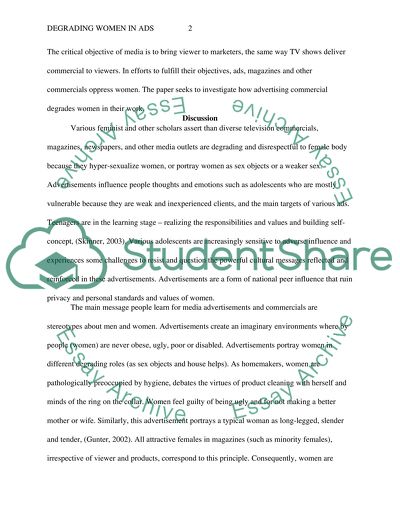Cite this document
(“Degrading Women In Ads Essay Example | Topics and Well Written Essays - 2000 words”, n.d.)
Degrading Women In Ads Essay Example | Topics and Well Written Essays - 2000 words. Retrieved from https://studentshare.org/english/1402966-degrading-women-in-ads
Degrading Women In Ads Essay Example | Topics and Well Written Essays - 2000 words. Retrieved from https://studentshare.org/english/1402966-degrading-women-in-ads
(Degrading Women In Ads Essay Example | Topics and Well Written Essays - 2000 Words)
Degrading Women In Ads Essay Example | Topics and Well Written Essays - 2000 Words. https://studentshare.org/english/1402966-degrading-women-in-ads.
Degrading Women In Ads Essay Example | Topics and Well Written Essays - 2000 Words. https://studentshare.org/english/1402966-degrading-women-in-ads.
“Degrading Women In Ads Essay Example | Topics and Well Written Essays - 2000 Words”, n.d. https://studentshare.org/english/1402966-degrading-women-in-ads.


